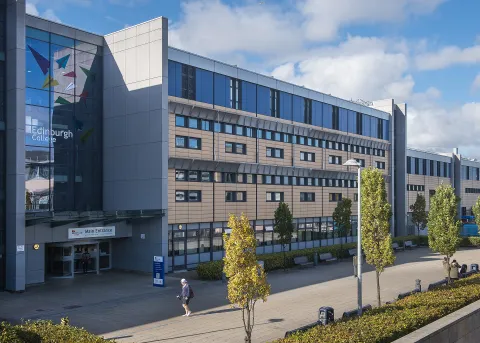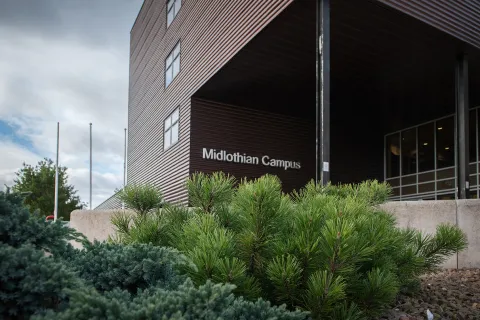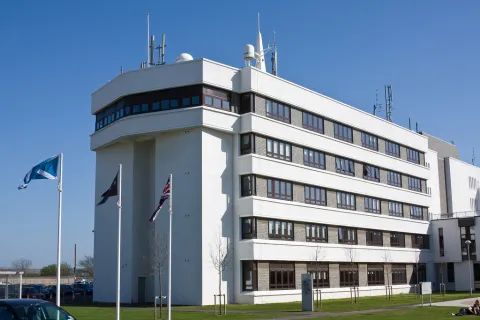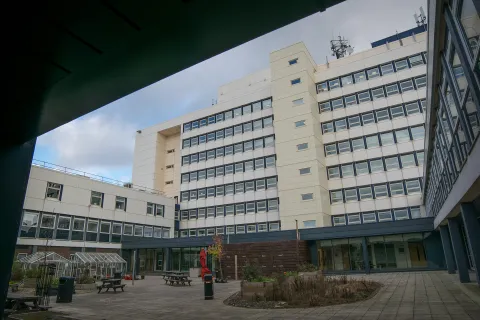
Housing Advice
Edinburgh offers a mixture of private rented housing (houses and flats from private landlords or letting agents) and purpose-built student accommodation (PBSA) — managed halls or blocks designed for students.
Each option has pros and cons: private lets often give more independence and possibly lower cost, while PBSA tends to include bills, on-site management and student-focused services.
On Campus Accommodation
The College runs student accommodation on the Milton Rd Campus, exclusively for Edinburgh College students. You can find out more about availability and rates, on their website
Purpose Built Student Accommodation (PBSAs)
What it is: Modern student halls or blocks run by specialist operators. Rooms are usually rented individually or as en-suite clusters and often include communal spaces, laundry, and 24/7 management.
What to check
- Is rent inclusive of bills (heating, electricity, Wi-Fi)? If not, ask for estimates.
- Contract length — many PBSA contracts run for the full academic year (term dates).
- What happens if you leave early? Check the operator’s cancellation policy and any fees.
- Safety and security: door access, CCTV, on-site staff and fire-safety certificates.
Pros | Cons |
|---|---|
|
|
Private Rented Accommodation
What it is: A tenancy between you and a private landlord or agent. In Scotland most student private lettings will be under the Private Residential Tenancy (PRT).
Typical costs: monthly rent, tenancy deposit (usually up to 2 months' rent), a refundable holding deposit is uncommon (and some fees are illegal) — always get receipts.
Before you sign: a short checklist
- View the property in person and check heating, windows and locks.
- Ask what bills are included (council tax, electricity, internet, water).
- Confirm deposit amount and where it will be protected.
- Check the landlord is registered (Landlord Register) and whether an HMO licence is needed.
- Get a written tenancy agreement and keep a copy. Familiarise yourself with the government-published Model Tenancy Agreement.
- Take photos and agree an inventory so you’re not unfairly charged later.
Pros | Cons |
|---|---|
|
|
How Leases Work in Scotland
Most private student tenancies in Scotland are covered by the Private Residential Tenancy (PRT). Key points to know:
Tenancy type: the PRT is an open-ended tenancy (no fixed end date is required by law) though many contracts set a contractual academic-year period.
Notice: tenants can usually give notice to end their tenancy (check the tenancy agreement for exact notice periods).
Deposits: must be held in a tenancy deposit scheme and returned at the end of the tenancy unless deductions are agreed or awarded.
Repairs & safety: landlords are responsible for most major repairs and for providing a safe, habitable property.
Disputes: unresolved problems can be raised with the First-tier Tribunal for Scotland (Housing and Property Chamber).
This page is a summary — always read your tenancy agreement and seek formal advice for legal questions.
Where to get further advice
If you need more help, these organisations offer free advice and tools for tenants in Scotland:
- Shelter Scotland — housing and deposit guides
- Citizens Advice Scotland — renting and deposits
- Scottish Government — Private Residential Tenancy information and forms
- Edinburgh City Council — student accommodation (planning guidance)
Safety
For a home to be fit to live in, it must meet a basic level of repair, also called the ‘tolerable standard’. Repairs and responsibilities vary between private and social landlords and you should always read your lease and tenants handbooks (if provided) for your conditions.
Most landlords will carry out safety checks on your property for things such as gas, carbon monoxide and electrical equipment.
Electrical checks should be carried out at least every five years or three years for Houses of Multiple Occupancy. They will test all appliances, check for hazards and potential electrical shock risks, make sure wiring is safe and make sure circuits and equipment are not overloaded.
Gas safety and carbon monoxide checks should be carried out at least once per year, you need to ensure you allow access at this time otherwise your landlord can enforce access. During these checks they will check gas appliances, gas pipework and ensure appliances have suitable ventilation. After the check you should be provided with a copy of the gas safety record.
Ensure your home has a working interconnected fire alarm, and to check it regularly. There are lots of ways you can minimise risk of fire such as; not leaving candles or burners unattended, unplugging appliances that are not being used, ensuring adapters are not overloaded and not cooking while sleepy or drunk. Find out more about fire safety here.
Homelessness
Being homeless doesn’t just meaning sleeping rough. You could be sofa surfing at friends and families homes, living in hostels or at risk of violence. There are many reasons why someone may be made homeless, whether it is relationship breakdown, eviction, or unsuitable living conditions.
Your first call should be to your local council who can assess you and place you in temporary accommodation.
If you are escaping violence or abuse there are also domestic violence and women's refuges such as Scottish Women's Aid.
The type of accommodation you need will depend on how much money you have, the size of your family and your personal circumstances.
For more information about homelessness, please check the College's homelessness page or visit Shelter Scotland’s website.



